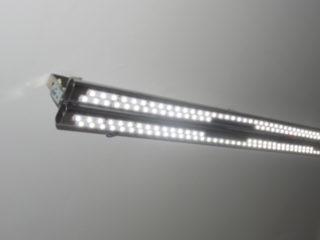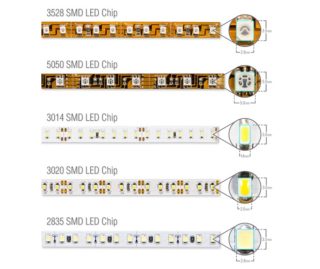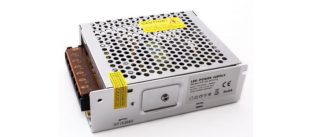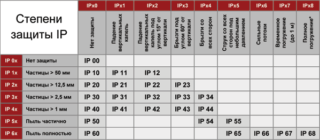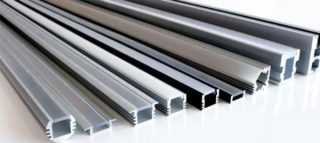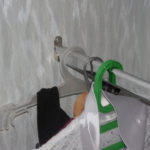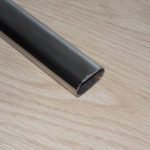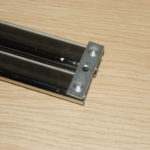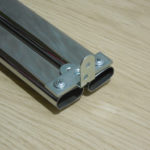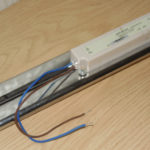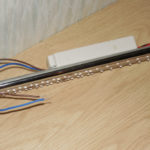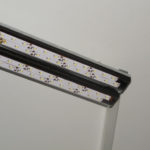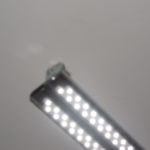LED lighting is the most profitable and promising way of lighting. LEDs have good technical characteristics. The only drawback of such devices is the high cost, so users are trying to find a way to make a lamp from an LED strip on their own.
Benefits and Applications
LED strip is a flexible rubberized board on which diodes and resistors are installed. With this simple design, you can independently create a lighting device and put it in any convenient place. The tape has special notches of white color, according to which it can be cut into small pieces. It is impossible to cut the board out of lines, otherwise it will be impossible to use the device due to a violation of the contact between the LEDs. There is a special adhesive layer on the tape for easy fixing.
Compared to conventional incandescent lamps, LED devices have the following advantages:
- profitability;
- long service life;
- variety of forms;
- safety including fire;
- flexibility;
- lack of pulsations - the bulbs will not blink;
- environmental friendliness;
- efficiency.
Due to all its advantages, ice tapes have a wide scope. They can be used to illuminate aquariums, stretch ceilings, furniture, shop windows in shops, the work area, in greenhouses and when growing seedlings. Most often, lamps made of tape are used for additional illumination.
Depending on the tasks, you need to be able to choose the right product. You can make a lamp from an LED strip with your own hands from any improvised materials.
Types and parameters
The model range of LED strips is presented by budget and expensive analogues. They differ in power, brightness of the diodes, luminous flux and other characteristics.
The most popular are the designs of the following series:
- Smd3528. Power depends on the number of diodes per meter. There can be 60 and 240 pieces. Power - from 5 to 16 W, luminous flux - from 5 to 9 lm.
- Smd2835 premium. This is one of the best cheap ribbons with excellent characteristics and high brightness. At 1 m, 60-120 diodes are placed. The light flux is 20-23 lm. The tape can be cut into segments of 5 cm. Can be used for spot lighting.
- Smd3014. Similar to the previous model. In 1 m there are 60-120 LEDs. The power depends on the number - 36-72 W and the luminous flux of 6-11 lm.
If the project requires a more powerful tape, it is recommended to pay attention to the following products:
- Smd5050. On one running meter is 30-120 diodes. Light flow 50-60 lm, power 7.2 - 25 watts.
- The smd5630 and smd5730 series have similar characteristics. They have high power and high brightness of 50-60 lumens. Used in LED lamps.
On sale you can find more original designs. For example, there are high-voltage flexible boards for direct connection to a 220 V power supply network. There are also low-voltage products for 12 and 24 V working through a rectifier. For use in difficult climatic conditions, a model in a waterproof housing is selected.
Tapes are sold in reels of 5-10 meters. If necessary, they can be cut into small pieces along special lines. High voltage products are sold 100 meters long.
Controller and power supply
To create the lamp yourself, you need to install a rectifier (power supply), which will convert the voltage in the 220 V socket to working 12 V. The power supply is selected based on the number of diodes per meter and power.
For example, for a smd5050 with 60 LEDs 5 m long, the total load will be 5 * 15 = 75 watts. It is necessary to add a load of 30%, then the resulting value will be approximately equal to 95 watts. This number selects the closest power supply to the load.
How to assemble a lamp from an LED strip yourself
A homemade light source from led strip can be made in different formats. When working, you must adhere to the assembly recommendations and take into account all the features of the tape.
First you need to determine the number of LEDs per meter. Power depends on this. When purchasing components that depend on the load (drivers, wires), you need to add a margin of 30% to the power.
Materials
First of all, you need to stock up on the necessary components for the lamp.
The parameters of the LED strip need to be calculated in advance. If the lamp will be used outdoors, there must be appropriate characteristics that are resistant to the negative effects of the environment. Also for wet rooms should choose products with a degree of IP4 and higher. If the device will work in water, then it must be completely waterproof - with a class of IP66 or IP67.
Also, the master will need:
- screws;
- switch;
- aluminum corner;
- drill;
- pencil;
- ruler;
- jigsaw;
- pliers.
After collecting all the necessary materials, you can begin to create a flashlight.
Installation
There are different schemes for creating a lamp from LED strip. The choice of the right option depends on which product the user wants to receive as a result. The following varieties are available:
- Horizontal.
- Vertical.
- With legs.
The assembly algorithm does not depend on the selected variation, so all steps will be the same.
- First you need to note the length of the corner.
- Drill a hole of the required length in it. Using this hole, the lamp will be fixed to the screws.
- Installation of a corner in the chosen place.
- Installing the switch in place of the hole. Also, in place with a cut, you need to solder the wires.
- Processing tape with acetone. The surface must be degreased.
- Fastening the tape to the aluminum profile. At first, it is recommended to glue the tape slightly so that there is the possibility of eliminating inaccuracies. After the user has made sure that everything is glued correctly and evenly, it is possible to level the LED strip across the entire surface and connect the wires.
- 1
- 2
- 3
- 4
- 5
- 6
- 7
- 8
Typically, power is selected at 12 V. In the case of using a single-color, the same contacts are soldered. For RGB, the marking must be followed. Also, when installing a multi-color tape, you need to take care of the controller in advance. It allows you to adjust the color of the backlight and the brightness of the lighting.
Typically, control is carried out using the remote control. Connection must be made using a stranded wire. Lugs are used at the ends. Then they are installed in the block and fixed with screws.
Do-it-yourself chandelier made of LED strip can be placed horizontally. This table lamp is perfect for installing on a work surface in the kitchen or in the nursery.
